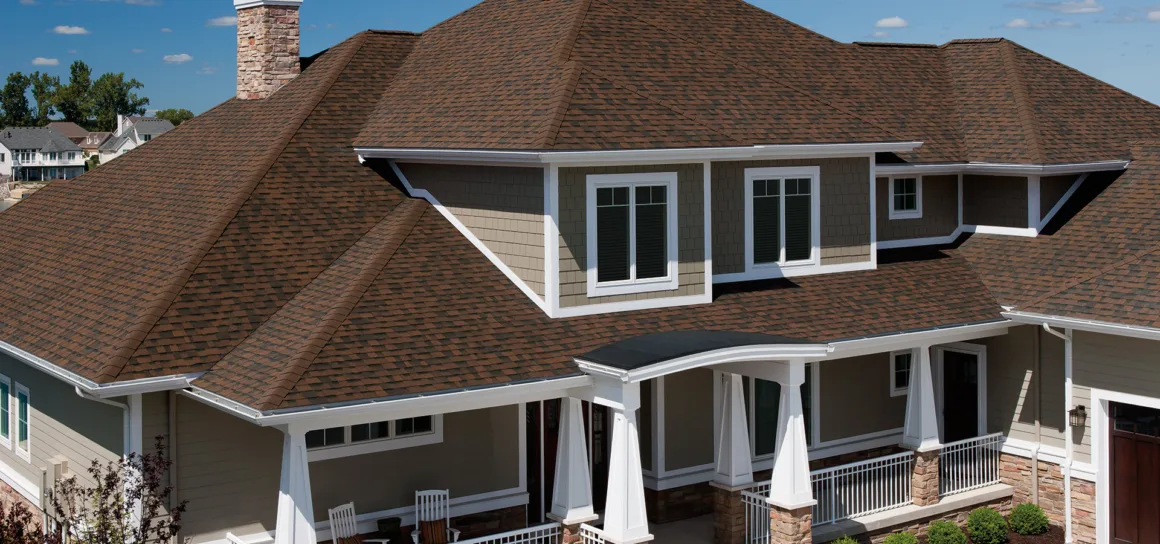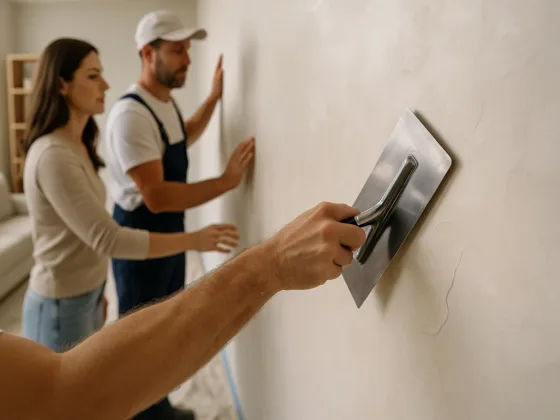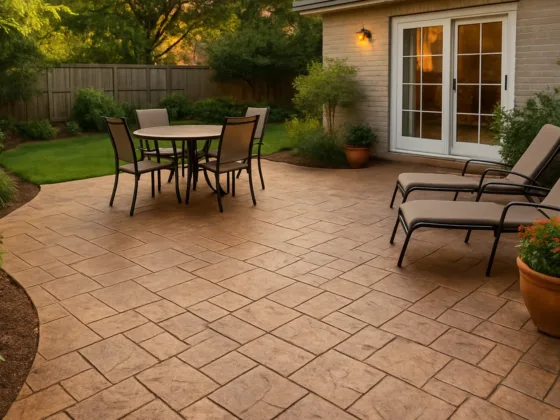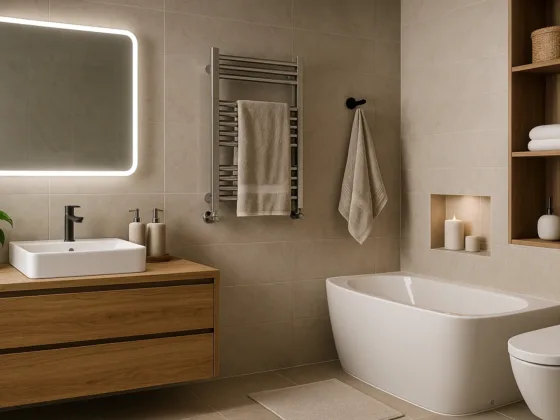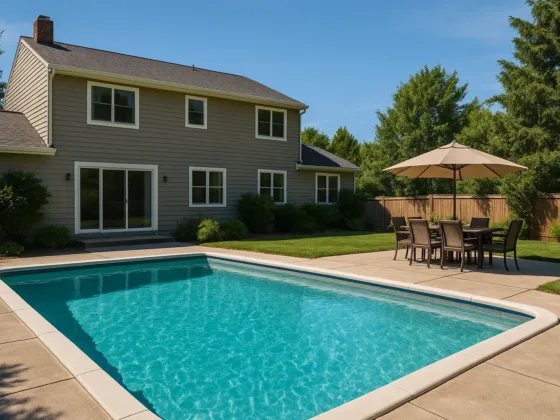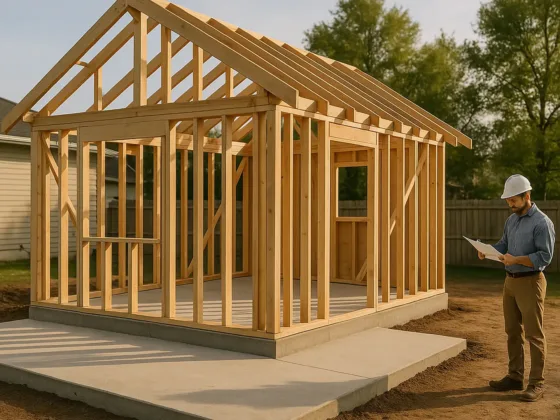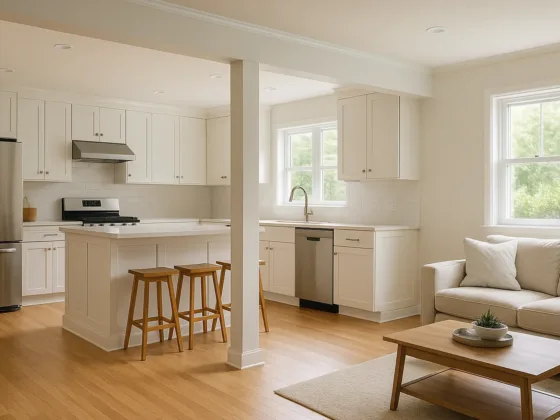Many homeowners overlook the importance of hiring trusted roofing contractors for their homes, believing that roofs require minimal upkeep.
Shockingly, 80% of roofs deteriorate earlier than expected, resulting in expensive repairs that can accumulate into thousands of dollars. Recognizing the importance of regular roof maintenance can assist homeowners in preventing these significant costs.
This article will discuss crucial roofing advice to keep your home secure, energy-efficient, and aesthetically pleasing.
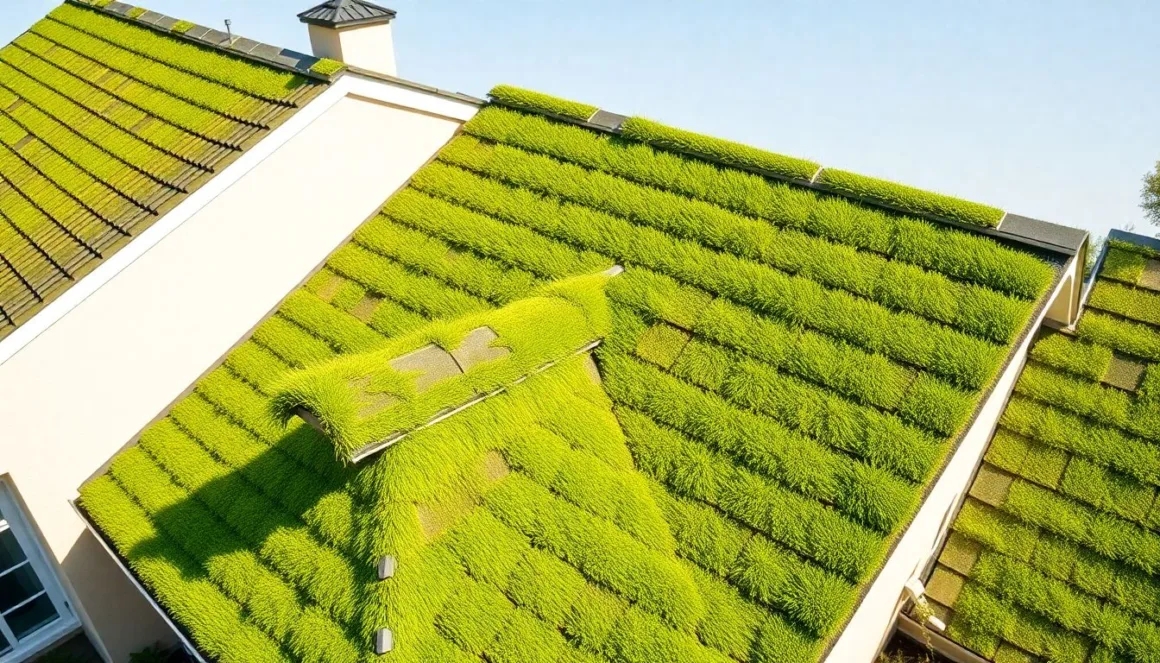
Choosing the Right Roofing Material
Selecting the right roofing material is essential for ensuring the longevity and durability of your roof. Different materials offer distinct benefits, and understanding these can help you make an informed choice.
Here are some common roofing options that many homeowners consider:
1. Asphalt Shingles
Asphalt shingles are one of the most popular choices. They provide an affordable solution for many and typically last between 15 to 30 years.
The average cost for asphalt shingles ranges from $90 to $100 per square, making them a budget-friendly option for those looking for reliable coverage without a high price tag.
2. Metal Roofing
Metal roofing is another excellent choice known for its durability and energy efficiency. It can last anywhere from 40 to 70 years, giving you a long-term solution for your roofing needs.
The costs for metal roofing vary widely, falling within the range of $100 to $300 per square. This material stands up well against various weather conditions, making it suitable for many regions.
3. Tile Roofing
Tile roofing offers a longer lifespan than many other materials, lasting 50 years or more. This longevity comes at a higher cost, typically between $300 and $500 per square.
Tile roofs not only provide robustness but also add a distinctive aesthetic appeal to a home, making them popular in certain areas.
When deciding on the best roofing material, several factors should be taken into account:
Climate
- Climate plays a significant role in the effectiveness of roofing materials. For example, metal roofing is ideal in areas that experience heavy snowfall, as its smooth surface allows snow to slide off easily. On the other hand, tile roofing performs exceptionally well in hot climates due to its ability to reflect sunlight and keep homes cooler.
Budget
- Budget is another critical consideration. It’s essential to weigh the long-term benefits of a material against its initial costs. Sometimes, a higher upfront investment might lead to savings in maintenance and energy costs over time.
Aesthetics
- Aesthetics cannot be overlooked either. The style of your roofing material should complement your home’s architecture. Different materials have unique appearances that can enhance or detract from your home’s overall look.
For example, a residence in the Midwest may find that metal roofing is the best option due to its resistance to harsh winters and snow.
In contrast, a home situated in the Southwestern region could benefit significantly from tile roofing, as its design helps to manage the intense heat and sun of that area.
Regular Roof Inspections and Maintenance
Regular roof inspections and maintenance are essential for ensuring the longevity and effectiveness of your roof. To keep your roof in good condition, consider the following guidelines.
1. Conduct Inspections Twice a Year
It is advisable to conduct inspections at least twice a year. Check during spring and fall, as these seasons help identify any problems before they worsen.
Additionally, inspect your roof after severe weather events, such as heavy rain, strong winds, or hail. These conditions can cause hidden damages that might not be immediately visible.
2. Look for Missing or Damaged Shingles
During your inspection, look for missing or damaged shingles. Shingles play a crucial role in protecting your home from the elements. If you find any that are loose or completely missing, they should be replaced promptly.
3. Examine the Flashing
Also, examine the flashing around chimneys and vents. Ensure it is secure and in good shape, as loose flashing can lead to leaks.
4. Check for Moss or Algae Growth
Look for moss or algae growth as well, especially in shaded areas. These growths can retain moisture and cause shingles to decay.
5. Use a DIY Roof Inspection Checklist
A DIY roof inspection checklist can help guide you through the process.
- Check the interior of your home: Look for signs of water damage, such as stains on ceilings or walls. These can indicate that there is an issue with your roof.
- Inspect the perimeter of the roof: Look for loose shingles or areas where the shingles are peeling away.
- Pay attention to valleys: Water flows through these areas, so they can be prone to wear and tear.
6. Check Your Gutters
Another important aspect of maintenance is checking gutters. Look for granules from shingles collecting in the gutters. This can signal that your shingles are wearing down and may need replacement soon.
7. Call in a Professional if Needed
- If your inspection reveals significant issues, it is wise to call in a professional. Warning signs for a professional inspection include extensive damage that is beyond simple repairs.
- After severe storms, it’s also important to have a professional assess your roof, even if you do not see apparent problems. Sometimes, damage can be subtle and require an expert’s eye.
- Lastly, if you’re uncomfortable performing the inspection or feel unsafe, it’s best to rely on professionals who have the training and equipment to handle such tasks.
Addressing Common Roofing Problems
Homeowners often face various issues with their roofs, some of which can be handled without professional help. Among these challenges, minor leaks are common. Taking care of these leaks can save time and money.
Fixing Minor Roof Leaks
Fixing minor roof leaks involves a few straightforward steps:
- Identify the source of the leak: Look for areas where water drips or stains appear inside the house.
- Apply roofing cement: Once the source is located, apply roofing cement to any visible cracks or holes. This tough adhesive can seal small openings effectively.
- Use waterproof tape for smaller repairs: For even smaller repairs, consider using waterproof tape. It can add an extra layer of protection against water seeping through.
Dealing with Moss and Algae Growth
Another common problem involves moss and algae growth on the roof. These issues can lead to further damage if not treated. A simple solution is to create a mixture of vinegar and water:
- Spray the mixture on affected areas: Spray this mixture on the affected areas to kill the growth.
- Rinse off with clean water: After a short time, rinse off the mixture with clean water.
- Install zinc or copper strips for prevention: To prevent future growth, install zinc or copper strips along the ridge of the roof. These metals release tiny particles that help keep algae and moss at bay.
Recognizing Major Roof Damage
While minor issues can often be addressed by homeowners, recognizing major roof damage is crucial:
- Sagging areas on the roof: Sagging areas on the roof may signal serious structural problems. If you notice any sections that appear to droop, immediate action is necessary.
- Large patches of missing shingles: Large patches of missing shingles should not be ignored. This type of damage can expose the underlying materials to weather elements and lead to more severe issues.
- Persistent leaks after repairs: If leaks persist even after repairs, it is best to consult a professional. They can assess the situation more thoroughly and recommend appropriate solutions.
Always prioritize safety and the integrity of your home’s roof.
Proper Ventilation and Insulation
Proper ventilation and insulation in your attic are crucial elements for maintaining a healthy home.
The Importance of Ventilation
- Prevents Moisture Buildup: Adequate ventilation allows air to flow freely, which helps to prevent moisture buildup. When humidity collects in the attic, it can lead to various problems, including the growth of mold.
- Protects Air Quality: Mold not only damages the structure of your roof but also affects the air quality inside your home. Contaminated air can lead to health issues for you and your family.
- Extends Roof Lifespan: Proper ventilation contributes to the longevity of your roofing materials. Excess moisture can cause your roofing materials to deteriorate more quickly than they should. This can mean costly repairs or even the need for a full roof replacement sooner than expected.
- Saves Energy Costs: Proper airflow keeps the attic dry and protects your investment in roofing. It also leads to significant cost savings on energy bills.
The Role of Insulation
Insulation also plays a significant role in home comfort and efficiency.
- Maintains Indoor Temperature: Effective roof insulation helps maintain a stable indoor temperature year-round. In winter, it keeps warm air inside, and in summer, it keeps heat from entering.
- Creates Comfortable Living Space: This stability creates a more comfortable living space for everyone.
- Reduces Environmental Impact: Lower energy usage not only saves money but also reduces your environmental impact.
Improving Attic Ventilation and Insulation
To improve attic ventilation and insulation, consider installing soffit vents and roof vents. These features work together to enhance airflow.
- Soffit Vents: Draw in cool air from outside
- Roof Vents: Allow warm air to escape
This combination ensures that your attic stays well-ventilated.
Additionally, when selecting insulation, ensure it meets local building code requirements. High-quality insulation will last longer and perform better.
Taking these steps will lead to a more comfortable, energy-efficient home while protecting your roofing materials from damage.
RELATED: 5 Things You Need to Know About Residential Roof Cleaning
Understanding Your Roof’s Warranty
Understanding your roof’s warranty is crucial to protect your investment in your home. A roof is a significant expense, and knowing the details of your warranty can save you money and hassle.
Here are the key points you should be aware of.
1. Coverage Can Vary
The coverage of roofing warranties can differ greatly from one manufacturer to another. Some warranties may offer complete replacement of the roof if it fails within a certain period.
Others might only cover specific repairs caused by defects in materials or workmanship. It’s essential to read the warranty carefully to identify what is included and what is not.
2. Maintenance Matters
Regular maintenance is often a requirement to keep your warranty active. This means that you may need to perform certain tasks, like cleaning gutters and inspecting for damage, on a routine basis.
Failing to comply with these maintenance guidelines could void your warranty, leaving you unprotected.
3. Filing a Claim
If you need to file a warranty claim, start by gathering essential documents. Collect photos of the issue and any receipts for materials or services related to the roof. This documentation will be helpful in supporting your claim and proving the details of your situation.
Next, contact the manufacturer of your roofing materials to learn about their specific claim procedures. They usually have a process in place to follow. Make sure to understand what steps you need to take and what information they require.
4. Keep Records
It’s also important to keep detailed records of all your interactions with the manufacturer. Note the dates, times, and names of the representatives you speak to. This will help you track the progress of your claim and provide clarity if any disputes arise.
Being well-informed about your roof’s warranty can lead to significant savings and ensure that your home remains safe and secure. Take the time to understand the terms and requirements associated with your warranty.
Conclusion
In summary, understanding your roof and maintaining it is vital for long-term benefits. Prioritizing inspections, choosing quality materials, and maintaining proper ventilation will reduce costs and enhance comfort. Start today by scheduling a roof inspection or creating a regular maintenance plan for peace of mind and savings.
FAQs
The best roofing materials for longevity include asphalt shingles (15-30 years), metal roofing (40-70 years), and tile roofing (50 years or more). Your choice should depend on your climate, budget, and the aesthetics you prefer for your home.
It’s recommended to inspect your roof at least twice a year and after any severe weather events. This helps catch any issues early before they become costly repairs.
Look for missing or damaged shingles, water stains inside your home, moss growth, and sagging areas on your roof. If you notice extensive damage or persistent leaks, it’s best to call a professional.
Yes, for minor leaks, you can often identify the source and use roofing cement or waterproof tape for repairs. Just make sure to be cautious and consider calling a pro if the damage is extensive.
Proper attic ventilation prevents moisture buildup, which can damage your roof and lead to mold. Good insulation keeps your home comfortable and can save you up to 20% on energy bills.
Roof warranties vary widely, so it’s important to understand what is covered—some offer full replacements while others only cover repairs. Regular maintenance is often required to keep your warranty valid, so make sure to keep records of your inspections and any work done.
